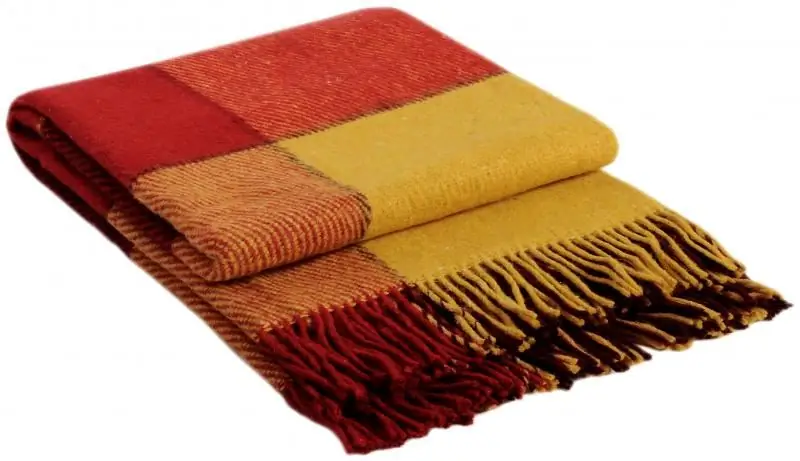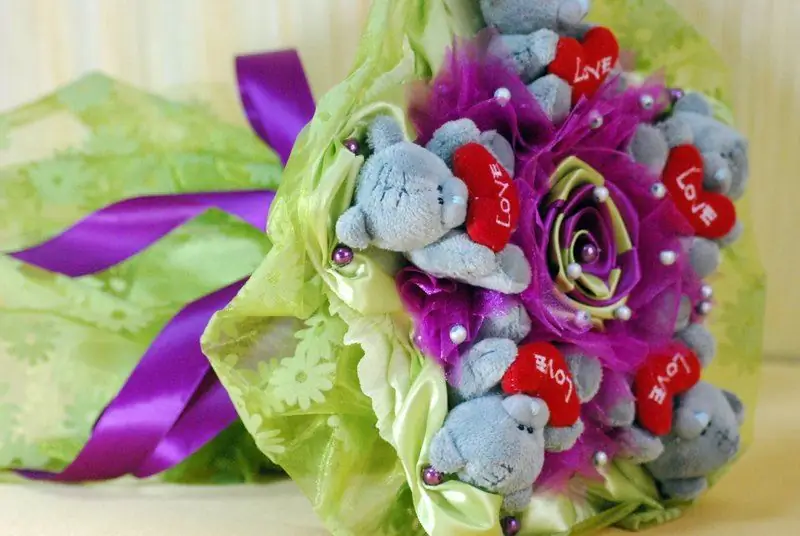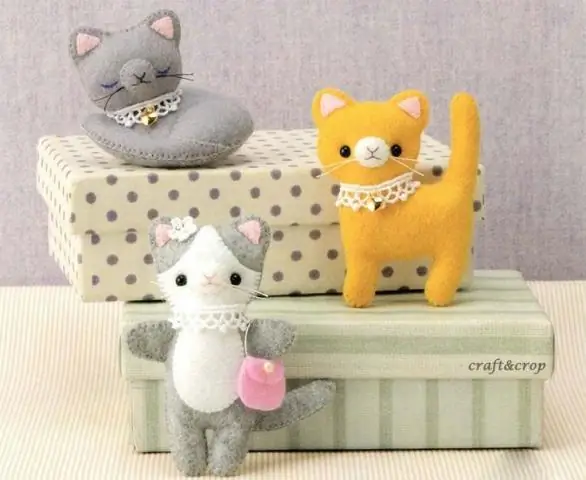
Table of contents:
- Author Bailey Albertson [email protected].
- Public 2023-12-17 12:53.
- Last modified 2025-01-23 12:41.
How to properly wash and clean soft toys

If you have a child, then a large number of soft toys in your home are provided. They can be of different sizes and colors, the most beloved ones or those that constantly stand in the corner, but one thing unites them: soft toys perfectly accumulate dust and dirt on themselves. Therefore, from time to time they need to be washed. How to properly wash soft toys so as not to harm them and the baby who plays with them?
Content
- 1 Are they dirty?
- 2 What and how can you wash
- 3 If there is a music unit
-
4 Hand wash
4.1 Video: how to wash a stuffed toy with your hands
- 5 Washing in an automatic machine
-
6 How to clean items that cannot be washed
-
6.1 Wet cleaning with foam
6.1.1 Video: Caring for a Large Soft Toy
-
6.2 Dry cleaning
6.2.1 Video: Cleaning Stuffed Toys at Home
-
-
7 Features of washing during quarantine
7.1 Video: Dr. Komarovsky about children's toys
Are they dirty?
Watch your child play with a teddy bear, bunny, or rag doll. He not only rolls the toy on the floor, there are hugs and kisses here, and a taste test. The problem is also added by the fact that, no matter how cleanly you tidy up the apartment, the ubiquitous dust still penetrates the premises and settles on the surfaces. It is not always possible to notice how the toy gradually loses its color brightness under a layer of dust.

Children spend a lot of time with soft toys, so you will have to wash these items.
In addition, children often do not let go of their favorite soft toys literally for a minute. This means that a soft playmate will surely bathe in a puddle, roll over in a sandbox and smear himself on the grass. As you can see, periodic washing of such toys is a must. Otherwise, the germs, along with the dirt, will move onto the child.
Soft toys should be washed as they become dirty. If your child is very fond of such a thing, then washing should be done at least every 2-3 weeks. Before you start cleaning, look at the tag of the toy: it contains the features of care.

Unfortunately, dust mites are permanent residents of soft toys, and they can cause allergies in a child.
What and how can you wash
Allergists recommend using the following products:
- special powders, gels and conditioners for washing children's clothes;
- baby soap;
- laundry soap;
- any shampoo.

For soft toys, use special powders for baby clothes
Many housewives wash soft toys only by hand. The instructions for the product or the label on it will tell you if washing is allowed in the machine. This will greatly facilitate your task.
Exclusively manual cleaning is used in cases where:
- the toy is sewn from heterogeneous materials;
- there are glued parts;
- the product has a nose, eyes, mouth made of colored plastic, which can be scratched or rubbed off when machine washed;
- sawdust, rice, buckwheat husks, straw, cotton wool were used to fill the toy;
- the product has a long silky pile, which can felle and lose its shine;
- the toy is very soft, prone to deformation and stretching.
If you machine wash such items, you may run into irreparable problems. Fabrics of different types can stretch or shrink unevenly, the filler can become damp and crumpled up (which will lead to a strong deformation of the toy), and a pretty face will lose all its charm.

Most soft toys should be straightened and hung dry after washing.
The peculiarities of cleaning soft toys from contamination depend not only on the ability to wash by hand, in a typewriter or using other cleaning methods. There are many nuances to consider.
To prevent the child's pet from losing its shape after washing, it should be straightened and dried in warmth, hanging vertically or simply leaving it to “sit” on the dryer.
For knitted toys, hanging is unacceptable: the yarn, regardless of its composition (especially if it is wool), shrinks during washing and can stretch during drying, which will lead to deformation of the product. Therefore, dry the knitted toys horizontally on an unfolded terry towel.
If there is a music block
Surely among the collection of soft animals there are those that tell your child fairy tales or sing funny songs. Such a toy often becomes the most beloved, because you can talk with it, inventing new stories. This means that she will need cleaning more often. But how to carry it out so that the toy does not become silent forever when water gets into the electronic device?

The music block in many soft toys is made in the form of a small rectangular box and is either sewn or embedded in a Velcro pocket
If there is very little contamination, you can easily deal with it manually. Dissolve the detergent in water (about 1 tablespoon per 1 glass, or as directed on the label), apply a little solution to a soft brush or sponge and wipe the garment from top to bottom to remove any dirt. Then change the soap solution to clean water and repeat the treatment.
More serious pollution will require more work.
- Feel the toy, find the place where the electronics are located. Open the seam closest to the device.
- Carefully remove the electronic device box.
- Stitch the seam and wash the toy. Depending on the characteristics of the product, you can do it in a washing machine or manually.
- Dry the toy well, then open the seam again. Replace the electronics box. Choose the right color for the thread and darn the seam carefully.
If you do everything right, then the toy will still entertain your child like new.
Hand wash
Hand washing is a delicate cleaning method that works for almost all toys, but takes time and effort. Small and short-haired toys are usually less hassle because they dry quickly, do not have small parts and are easy to spin.

A tag attached to a stuffed toy will tell you how to wash the item.
- Wet the toy, lather it with baby or laundry soap. Place in a bowl of warm water and let sit for 10-15 minutes. Or prepare a soapy solution and soak the product in it.
-
If the dirt is fairly stubborn, wipe it off with a soapy brush or sponge. Slightly remember all parts of the toy with your hands, immersing it in a soapy solution.

washing soft toys Wipe off too heavy dirt more thoroughly, but carefully so as not to spoil the fluffy pile
-
Rinse the toy in clean water, wring it out well, straighten it and hang it up to dry, or lay it on a horizontal surface next to a heat source.

drying soft toys Dry the toy by spreading it well
Video: how to wash a soft toy with your hands
Washing in an automatic machine
Does the tag on the toy indicate machine washable? Then your task is much easier.
- Use for washing only special powders designed for baby clothes or hypoallergenic cleaning agents.
-
Place soft toys with plastics and long nap in the laundry bag. Keep in mind that machine wash is usually not recommended for toys with small plastic parts - eyes, nose, etc. However, if you remove them while washing or put such a toy in a pillowcase, most likely, the hygiene procedure will not harm the stuffed animal or doll.

soft toy in a special washing net You need to wash soft toys in a typewriter by putting them in a special bag
- Select a delicate wash cycle. To prevent the fabric from shedding, set the temperature to 30 degrees.
- Be sure to add an extra rinse to completely remove the remaining detergent from the toy, as well as baby softener to keep it fluffy.
-
Spinning in a machine when washing soft toys at a speed of more than 600 revolutions is not encouraged due to the high risk of deformation of products. You can replace it with a water drain.

toy bear in the washing machine Do not turn on the spin mode for more than 600 revolutions: the toy may lose its shape
- When the wash program ends and you take out the wet toys from the drum, place them on a horizontal surface (dryer or table) for a few hours to allow excess water to drain. When the garments are much lighter, hang them on a clothesline over the radiator, or leave them lying on the dryer until they are completely dry.
If the soft toy is too large to fit into the drum of the washing machine, you can dry-clean it. In many establishments of this nature, large-sized items are cleaned.

The easiest way to wash large toys is dry cleaning.
If you do not have such an opportunity and you don’t want to manually scrub the "big man", open the toy, take out the filler and wash the product in the machine. After drying, fill the toy again and sew it back up.
How to clean items that cannot be washed
Wet cleaning with foam
If, according to the instructions, the toy cannot be washed, you will have to clean it by hand. This is not difficult at all if the toy is small.
- You need to prepare a soapy solution that will give a stable, strong lather. Pour warm water into a bowl of a suitable size, dissolve the powder, baby shampoo or hypoallergenic detergent in it, whisk well.
- Put some foam on the sponge and clean the toy starting from the most dirty areas.
- Wipe each cleaned area to remove moisture. Use a microfiber cloth for this: it absorbs wet dirt very well. Do not forget to rinse it from the foam in warm water and wring it out.
- When you're done cleaning, spray the soft toy with a fabric softener solution from a spray bottle.
- After that, dry it with a hair dryer, making a kind of styling: smooth the fur with a comb so that it does not puff up.
- Now it remains to place the toy by the battery or on the balcony at night so that it dries completely.
Video: caring for a large soft toy
Dry cleaning
Some products are exclusively dry cleaned. In this case, a vacuum cleaner, ultraviolet light, frost, hot steam and soda with starch will help you.
Vacuuming the toy is quick and easy. Instead of the standard one, use a special small-sized nozzle designed for cleaning upholstered furniture. Also, if possible, change the suction mode to a lower one. You should vacuum your toys frequently, preferably every week. However, this method will not work to remove all dirt from the pile of the toy.

Vacuum cleaning suitable for toys with long hair that cannot be washed
This method is suitable for large toys. Small to medium sized products can be dust-free using this method:
- Place one or more toys in a sturdy plastic bag.
- Add 5 or more tablespoons of baking soda or starch.
- Close the bag and shake well for a few minutes.
- Remove the toys and brush them over the tub.
Let's say your toy is already old, or even inherited from the eldest son of a friend. There is a real danger that not only dust mites, but also pathogenic bacteria have lived in it for a long time and in large numbers. Cold, or rather frost, will help get rid of them. Fold the toys in plastic bags and send them to the fridge freezer for 2 days.
Ultraviolet radiation works in a similar way. Use a homemade quartz lamp, and if it's summer, place the plush team under the hot midday sun for a few hours.
Video: cleaning soft toys at home
Features of washing during quarantine
During periods of exacerbation of various infectious diseases up to an epidemic, soft toys will require special care. After all, they perfectly collect bacteria on themselves, unwittingly becoming carriers of diseases. Toys that cannot be washed, as well as those without which your child will cost a week or two, will have to be removed. And the baby's favorite soft friends should be washed very often, at least every other day.

During quarantine, toys will have to be washed much more often to reduce the child's risk of illness
If the fabric from which the toy is made can withstand processing at high temperatures, this will greatly facilitate the matter. Wash bears and hares at a temperature of at least 60 degrees, and after washing, pour over boiling water. Drying outside is excluded: only in the room, on clean surfaces, wiped with antibacterial agents.
Remember that severe frost and ultraviolet radiation are excellent at disinfecting toys. Another remedy for bacteria and viruses is hot steam. You can process your garments with a vertical steaming iron, a household garment steamer or a steam cleaner.
Video: Dr. Komarovsky about children's toys
Soft toys are the most common playmates for our little ones. Therefore, in no case should they be launched, otherwise they will turn from good-natured friends into a source of danger. Try to wash and wash toys more often, following the rules for caring for them, so they will not lose their fresh vigorous appearance and will delight the child for a long time with their softness, fluffiness and cheerful expression on their faces. Good luck and comfort to your home!
Recommended:
How And How To Wash Blood From Clothes And Linen At Home, Ways Of Washing By Hand Or In A Washing Machine + Photos And Videos

How to effectively remove fresh or old blood stains on clothes made from different fabrics? We apply folk advice in practice, using materials at home
How To Wash A Blanket At Home, Is It Possible To Use A Washing Machine, Which Mode To Choose + Photos And Videos

What materials are blankets made of? Natural and artificial fabrics. How to wash them in the washing machine or by hand. Proper storage
Is It Possible To Wash A Leather Jacket At Home And How To Do It Correctly + Photos, Videos And Reviews

What if my leather jacket gets dirty? Can it be washed? The most effective and safest ways to restore the original beauty of the product
A Bouquet Of Toys, Including Soft Ones, Do It Yourself: Step By Step Instructions For Beginners, Photos And Videos

A bouquet of toys: necessary materials, time consumption, step by step instructions. Examples of bouquets of toys: photo
DIY Felt Toys: Patterns, Templates And Master Classes With Photos And Videos

Ideas for making interesting New Year's toys and felt decorations. Detailed master classes with photos
